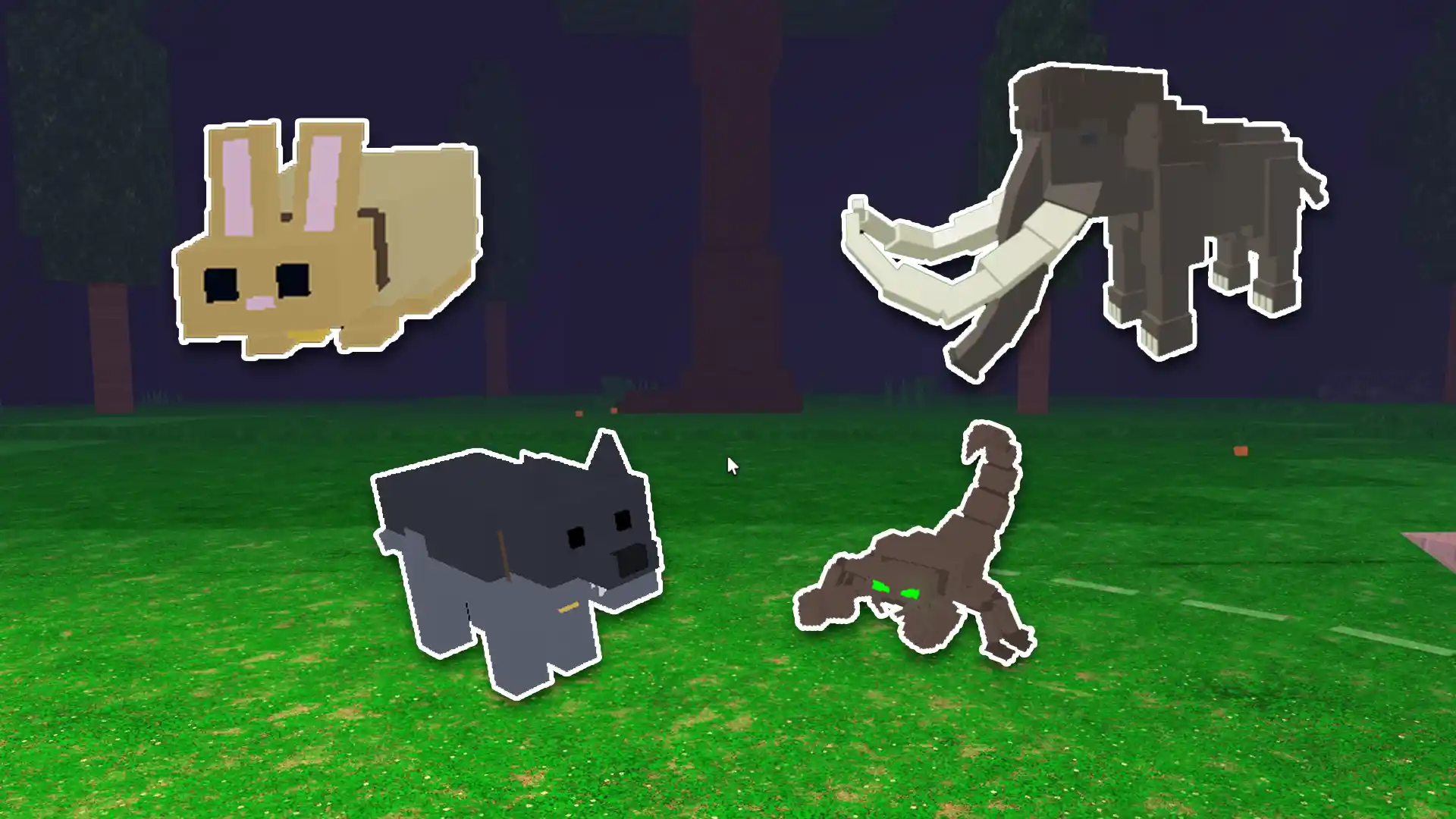Taming animals in 99 Nights in the Forest is one of the newest mechanics in the game and it lets you turn wild creatures into loyal companions. They can follow, defend, and assist you during your adventure; however, taming isn’t as simple as walking up to an animal – you need to know the right process and have the right tools. This guide will walk you through everything you need to know, from getting your first Taming Flute to completing the taming minigame.
Also Read | How to Get the Obsidiron Chest in 99 Nights in the Forest
Taming Animals in 99 Nights in the Forest
Once tamed, animals can perform tasks such as following you, sitting still, or attacking enemies on your behalf. You can also name your pets, release them, or keep them near your base. Each player can have up to two active pets at a time, so it’s important to choose your companions wisely.
The Taming Flute is the most important element. Without it, taming isn’t possible. There are three known flute tiers in the game:
- Old Taming Flute – Used for basic animals like bunnies or wolves.
- Good Taming Flute – Required for taming mid-tier creatures like Arctic Foxes or Alpha Wolves.
- Strong Taming Flute – Needed for powerful beasts like Bears, Mammoths, and Hellephants.
Where to Get Flutes
You can find flutes in Flute Tents or special chests. Later in the game, you’ll unlock an upgrade station (marked by a hammer icon) that allows you to improve your flute tier. Higher tiers make taming tougher animals possible and reduce the difficulty of the minigame.
How to Start Taming Animals
Use the Flute to Begin
Approach a tameable creature and play your Taming Flute. This will start the taming minigame and momentarily freeze the animal in place.
During the minigame, you’ll see a red bar that moves up and down and a green zone which is the target range. Your goal is to keep the red bar inside the green zone – hold to raise it, release to lower it. The more you stay within the target area, the faster the taming progress bar fills.
Harder creatures have multiple stages, represented by faces or icons above their heads. Each stage you complete fills one of those icons, and the difficulty increases with every round.
Feed the Animal
Once you complete a stage, the animal becomes calm and will demand food. You must feed it the correct item before continuing. Each animal has a specific food preference – for example, rabbits prefer carrots, wolves like steak, and larger beasts such as Mammoths require rarer ingredients like cake and pumpkins.
If the animal has multiple stages, repeat the process: flute minigame > feed > flute again until all faces turn into pink hearts, which indicates that the animal is fully tamed.
Tameable Animals and their Requirements

At the time of writing, these are the animals that can be tamed in 99 Nights in the Forest:
| Animal | Flute Required | Stages | Food |
| Bunny | Old Flute | 1 | Carrot x1 |
| Kiwi | Old Flute | 1 | Berry x1 |
| Wolf | Old Flute | 3 | Steak x2 per stage |
| Alpha Wolf | Good Flute | 4 | Steak x1 + Stew x1 + Corn x1 |
| Scorpion | Old Flute | 3 | Steak x1 + Morsel x1 |
| Arctic Fox | Good Flute | 3 | Steak x1 + Chili x1 |
| Bear | Strong Flute | 5 | Rib x1 + Stew x1 + Pumpkin x1 |
| Polar Bear | Strong Flute | 5 | Rib x1 + Stew x2 |
| Mammoth | Strong Flute | 5 | Pumpkin x2 + Cake x1 |
| Hellephant | Strong Flute | 5 | Pumpkin x2 + Cake x1 |
Here it is in action:
That was everything about taming animals in 99 Nights in the Forest. If you’re also curious to know how to get free gems in the game, head over to our linked guide.

